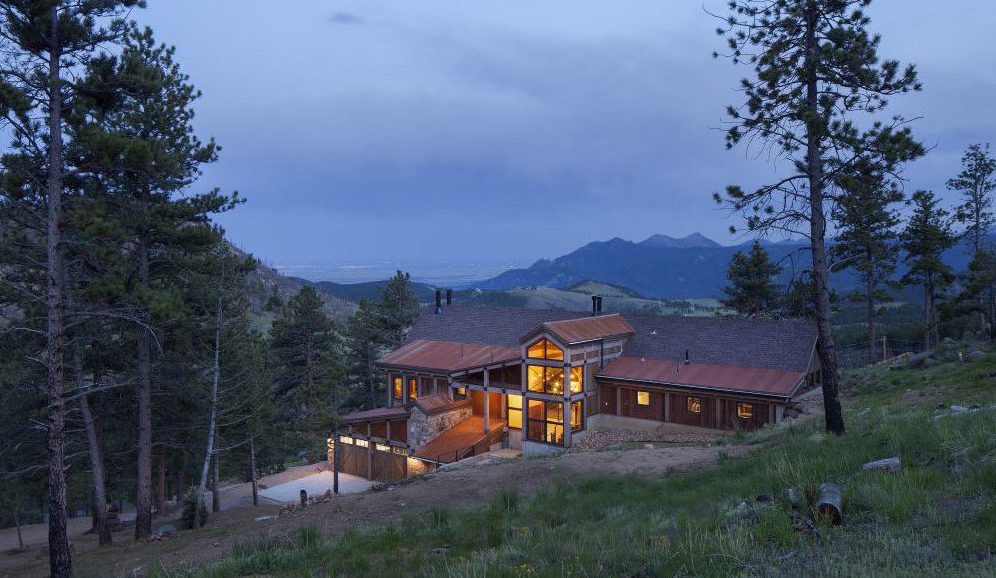Building a Home in the Mountains
What to consider when purchasing land in the mountains to build your custom home.
Colorado’s diverse landscape boasts majestic rocky peaks and expansive forestlands so it’s no surprise as to why you would want to build your home here. However, building a custom home on a mountain site presents itself with a unique set of challenges that will require extensive pre-planning from your architect and builder. So whether you’re moving to Colorado or have lived here your whole life, there are a few things you should note when purchasing land in the mountains to build your custom home.
Utilities
When looking at mountain properties, you’ll need to think about what utilities, if any, are included on the lot. Ideally, its best to search for a lot with utility connections, however, there are good chances you’ll fall in love with a perfect piece of land that will not have these systems in place. How will I power my home? The further the electric line the more costly it will be for the utility company to run a line to the boundary of your property. How will you heat your home? If your building site does not have access to natural gas there are a variety of other options such as electric, propane, and ground source pumps. Is there a source of water? If city water is available, there will be a one-time “tap fee” charged to hook into the local municipal water system, typically ranging from $20,000-$30,000. If it’s not available, your property will require a water well or cistern. Likewise, if a sewer system isn’t available, can a septic system be installed? A Perc test can be done to measure how quickly the land absorbs water to determine if a septic system will be suitable on your property. You will need all of these systems hooked up to your property before you can begin building your home.
Topography and Land
Building on a lot with topography will have a significant influence on the design of your home which is why a topographic survey is one of the first items your architect and builder will need from you. A sloped building site has its advantages as it lends itself well to a home design with a walk-out basement and can present a wonderful opportunity to capitalize on the views from your property. However, know that depending if your on the peak of the mountain or on the slope of the mountain, you may need to build a strong retaining wall to direct the flow of rainwater away from your home to reduce the possibility of earth erosion. You’ll want to have your architect and builder walk your property to determine the best location and orientation for the home to minimize expensive earthwork and foundation systems. A soils testing is also a vital first step. This test will guide the construction planning and impact the costs of the excavation and foundations in particular. In Colorado, there are some areas with very expansive soils, others that are solid granite, and others that have high water tables, which all impact the civil and structural engineering of the home you’re building.
Zoning and HOA Covenants
Where and what you can build on your property is mostly governed by zoning setbacks, location of easements and zoning district guidelines. It’s beneficial to talk with the local zoning department and/or hire a land surveyor to identify the boundaries and any potential restrictions with your lot. Also, if you’re purchasing a lot in a community with an HOA, it’s important to read through the CC&Rs to be aware of all of the rules of the neighborhood. The HOA CC&Rs is a set of regulations and architectural guidelines that help maintain a uniform look and quality standard throughout the neighborhood. These documents will directly influence the architectural decisions you make, whether that’s new construction or changes to an existing property. These architectural guidelines may include building size requirements, style limitations, and regulation on exterior aesthetics such as the color of your siding and/or roofing. Aside from the design of your home, an HOA may prohibit or regulate pets, fences, and detached structures such as guest houses or sheds.
Property Access
Is your property accessed by a County or private road? Being aware of how the roads to your property are maintained, especially during the winter months, is important. Private roads are plowed by an HOA whereas county roads are plowed by the county. However, there can be county roads in certain areas that are not plowed at all by anybody. It’s best to find out by asking your realtor who maintains the roads. Also, generally speaking, labor is more readily available in town so it’s important to hire a builder that has relationships with quality subcontractors who are willing to travel.
To prevent unforeseen costs during construction or unpleasant issues with your home down the road, it’s crucial to work with an architect and builder who has experience building on mountain sites. Just like you wouldn’t hire a band who only knows how to play jazz music when you need a band to play rock-n-roll, you won’t want to hire a builder who doesn’t have prior experience building mountain homes. It’s always a good idea to qualify the builder by looking at their portfolio of work and seeing a couple homes they’ve built in person.
With over 20 years of experience building in the mountains of Colorado, there’s nothing more rewarding to us then creating homes that express the spirit of the outdoors while blending with the natural landscape. If you’re thinking about purchasing a mountain property outside of Denver, Boulder, or the surrounding area, let us help you.



